The Best Outboard Motor for a Sailboat

The technology of sailing has remained mostly unchanged for centuries. Since learning to harness the power of wind, sailors have been transiting the world’s oceans, expanding trade routes and exploring new cultures. Although nothing more than a renewable natural resource and a single sail is needed to move a sailboat along the water, there are times when it’s important (and in our modern age, convenient) to leverage off a motor to get you where you need to go.
Like any unique piece of equipment in the world of sailing, outboard motors come in a variety of sizes with features and options to fit any owner’s needs. But of course, one size doesn’t fit all. Every boat is different – even those that come off the production line at the same time – and every owner is looking for something specific when it comes to their sailboat. From the purpose of owning the boat (blue water sailing vs. racing) to the location and impact on maintenance (cold weather vs. tropical weather), an outboard motor is just one of the many elements that will define a sailboat’s function and performance.
Whether you’re a new owner, or a veteran sailor, it’s important to know the basic components of any outboard motor . You should also have an idea of what you want your outboard motor to do for your size and model sailboat.
Table of contents

Outboard Motor Size
A larger boat doesn’t necessarily mean a larger motor. Although there are different ratings for different classes of boats, a small power plant can be more effective than a larger one. Conversely, an outboard motor can easily overpower a small boat and create unsafe conditions at high speeds. Guidelines and requirements differ between motorboats and sailboats. And while there is some overlap, these considerations apply directly to sailboats.
Engine power has to do with how much water a boat displaces. For sailboats, smaller is better. If you’re a bit of a math geek, the exact formula is 4 horsepower for every 2200lb of weight. Coupled with a propeller size, which can be determined using a propeller calculator , you’ll get a rough estimate to use as a guideline to start shopping. This is a good first step, since size is essentially a fixed variable. Though it’s worth noting for those who are buying a sailboat directly from the manufacturer, that actual weight will increase after delivery – once all other rigging and outfitting has been completed.
Physical size of your outboard motor is an important consideration and is directly related to the design of your sailboat. An outboard motor is made up of three parts from top to bottom:
- The Powerhead – Houses the engine. The bulbous part of the motor.
- The Midsection – Houses the exhaust system. Varies in length and design.
- The Lower Unit – Propellers attach to the gearbox. Submerged when operational.
Shaft length is an important design element and should be considered when purchasing a motor. A shaft that is too short will obviously prevent the propeller from being submerged in water, while a shaft that is too long will extend the propellers too far. Not only will it decrease the efficiency of your engine, it will create unnecessary drag. Know your transom length when looking at different models.
When an outboard motor is not being used, it should be stowed in its upright position. Some of the larger motors have an automated switch that will raise it out of the water, but some must be secured manually. Make sure everyone who sails with you is capable of lifting and securing the motor out of the water in case of an emergency.
Outboard Motor Power
Any kind of motor installed on a sailboat (inboard or outboard) should be viewed as a tool to help with maneuvering. Although there are some very skilled sailors out there who can sail into their slip without the aid of a motor, many harbors have restrictions that either don’t allow for the use of full sails, or there simply isn’t enough room to maneuver. A motor with both forward and reverse gears helps tremendously with docking.
While there is no exact correlation between boat length and total weight, the following is a rough guideline:
- 1-4 HP for boats up to 20’ (approximately 1000-2000lbs)
- 4-18 HP for boats between 20-30’ (approximately 2,000-10,000lbs)
- 18-34 HP for boats between 30-40’ (10,000lbs or more)
There are some things to consider when deciding how much horsepower you need or want. Location and the type of conditions you expect you’ll be sailing in is one of the biggest factors. Heavy seas and high winds typically associated with open ocean sailing will put more strain on your engine, and in some cases overpower it, whereas an engine that is heavier than needed will add unnecessary weight when racing. If you plan on motoring for long distances, consider purchasing an engine that will stand up to a lot of use.
Less HP is required for:
- Boat Design – Single hull boats made out of fiberglass require less power.
- 2-Stroke Engines – This is due to an overall lighter weight engine and higher torque.
- Diesel Engines – Diesel delivers more torque because the rate of compression is greater.
- Bigger Propellers – More surface area means more water displacement.
- Location – Motoring on lakes and rivers requires less power than open ocean.
- Distance – A smaller engine is suitable for shorter distances.
More HP is required for:
- Boat Design – Catamarans and heavier boats (regardless of size) require more power.
- 4-Stroke Engine – Engine weight and an extra step of compression yields less power.
- Gas Engines – The rate of compression for gas engines is much lower than diesel.
- Smaller Propeller – A smaller propeller displaces less water.
- Location – Open ocean, with tides and currents, will strain a smaller engine.
- Distance – Cover more distance when wind conditions are poor requires a larger engine.
Outboard Motor Cost
There is no way to quantify how much you will pay for any given motor. But there are several costs associated with owning an outboard motor that are definitely worth considering when making your purchase.
Certainly, a lager, more-powerful engine is going to be costlier than a smaller engine with lower horsepower. But as mentioned earlier, size is not necessarily a guarantee of performance and efficiency. At the same time, there’s only so much you can get out of an engine before you exceed its capability. Larger engines tend to help with resale value should you choose to sell your boat at some point, but a boat outfitted with right motor to begin with will always perform better than a motor that’s large just for the sake of it.
Factor in maintenance costs and fuel when looking at models. You want to run your engine at around 90% of its max RPMs to balance proper fuel usage and with wear and tear. Making a few calls to marine mechanics to inquire about an engine you’re interested in will give you a lot of information a sales person won’t be able to give you. The good news about outboard motors is that most of them are portable, which means you won’t have the added cost of either paying a mechanic to come to you, or having to get your boat to the yard, which usually requires help from a very good friend willing to spend all day driving and sailing back and forth.
Owning a boat requires constant care and maintenance, so a little knowledge goes a long way. While an outboard motor is not required for sailing, it’s a convenient addition that can greatly increase your enjoyment out on the water. Being patient and spending time researching engines will not only help you make the correct purchase but will help you take advantage of a great deal when it presents itself. Whether you sail the Caribbean, or race off the coast of California in a catamaran, there is an outboard motor that’s just right for you.
Related Articles
Daniel Wade
I've personally had thousands of questions about sailing and sailboats over the years. As I learn and experience sailing, and the community, I share the answers that work and make sense to me, here on Life of Sailing.
by this author
Sailboat Upgrades
Most Recent

What Does "Sailing By The Lee" Mean?
October 3, 2023

The Best Sailing Schools And Programs: Reviews & Ratings
September 26, 2023
Important Legal Info
Lifeofsailing.com is a participant in the Amazon Services LLC Associates Program, an affiliate advertising program designed to provide a means for sites to earn advertising fees by advertising and linking to Amazon. This site also participates in other affiliate programs and is compensated for referring traffic and business to these companies.
Similar Posts

How To Choose The Right Sailing Instructor
August 16, 2023

Cost To Sail Around The World
May 16, 2023

Small Sailboat Sizes: A Complete Guide
October 30, 2022
Popular Posts

Best Liveaboard Catamaran Sailboats
December 28, 2023

Can a Novice Sail Around the World?
Elizabeth O'Malley
June 15, 2022

4 Best Electric Outboard Motors

How Long Did It Take The Vikings To Sail To England?

10 Best Sailboat Brands (And Why)
December 20, 2023

7 Best Places To Liveaboard A Sailboat
How to Calculate Outboard Motor Size for Sailboats
It seems so complex to pick the right engine size for your sailboat. I was done with complex calculations and tried to make it easier here.
How to pick the right outboard motor size for your sailboat? To get the right amount of horsepower needed to efficiently propel a sailboat, divide the displacement of the boat (in lb) by 550. You need approximately 1 HP per 550 lb of displacement or 4 HP per 2200 lb. Most sailboats don't need a motor with more than 30 HP.
In this article, I'm talking about small outboard engines for sailboats. We're talking about displacement hulls here, so in other words: keel boats. They need more power than flat bottoms.
But they're not powerboats - so it's not our mission to go fast. It's our mission to get decent speed, good control over the boat, and the best possible fuel efficiency. Without breaking the bank of course.
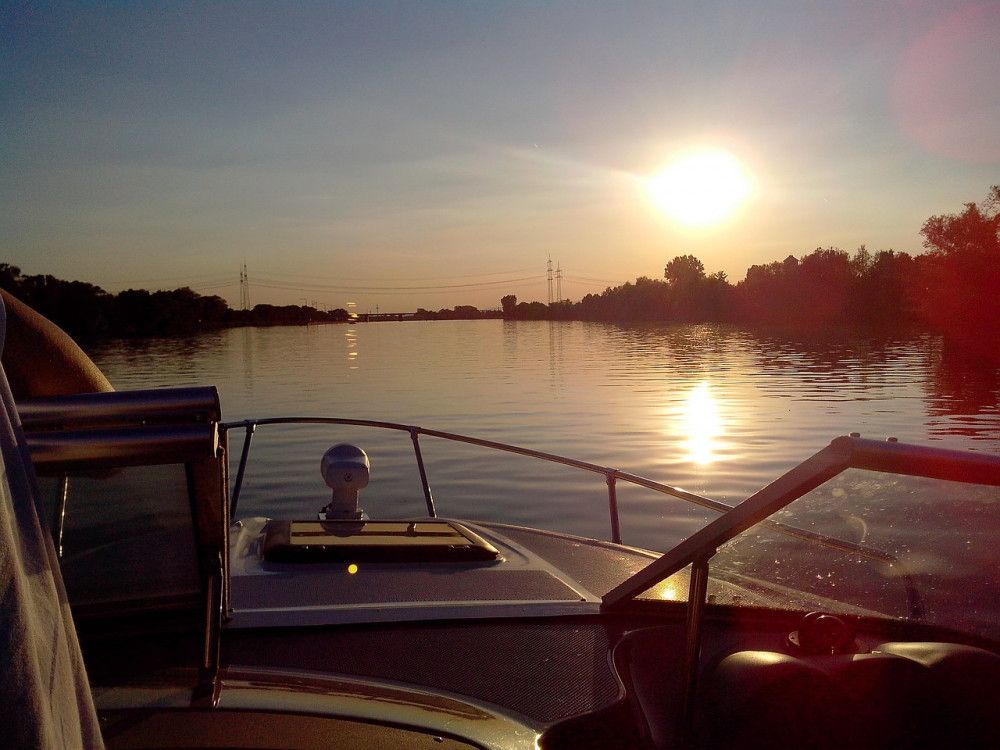
On this page:
How to pick the right motor size, other factors that are important for size, why is the right motor size important, is there a max hp for sailboats, in conclusion, related questions.
Sailboats need way smaller engines than powerboats. That's great news (unless your ultimate goal is speed), because it's cheaper to buy, cheaper to drive, and cheaper to maintain.
The amount of power you need is related to the hull displacement of your boat.
I like to use the simple formula:
HP = displacement (lb) / 550
So 1 HP for every 550 lb displacement, and 4 hp per 2200 lb.
Here, HP is the amount of horsepower you need to reach the maximum hull speed. This is in optimal conditions. So you have smooth water, no windage, a clean and polished hull, and so on.
If you want to get it absolutely right, you also need to correct for propellor size. And of course, a lot of other factors come into play (more on that later). But generally, these engine sizes will work with the following weights:
| Weight | HPs | Typical boat length |
|---|---|---|
| 1,000 lb | 1-2 HP | 18' |
| 2,000 lb | 4 HP | 20' |
| 3,000 lb | 6 HP | 22' |
| 4,000 lb | 8 HP | 24' |
| 5,000 lb | 9 HP | 26' |
| 6,000 lb | 11 HP | 26' |
| 7,000 lb | 13 HP | 27' |
| 8,000 lb | 15 HP | 28' |
| 10,000 lb | 18 HP | 30' |
| 12,000 lb | 22 HP | 32' |
| 15,000 lb | 28 HP | 36' |
| 18,000 lb | 34 HP | 40' |
That sounds about right to me. But remember that these are all rough estimates: I just try to give you a ballpark figure. There is no one formula to get an exact number. The hull design, sailing conditions, and your personal preference are all very important.
If you're serious about getting a new engine, I definitely recommend to get advice from an expert . But you know, salespeople always recommend the Turbo version. Remember that you don't have to overpower a sailboat. Usually you don't need anything over 30 HP. So at least you now know what will work on average.
What is hull displacement?
- Hull displacement is the weight of the boat, or the amount of water the boat displaces.
- Maximum hull displacement is the weight of the boat when it's fully loaded, including crew.
The weight of the boat is the same as its displacement, because the weight of any object is exactly equal to the weight of the water it displaces (aka: pushes aside). This is called Archimedes Principle.
The weight slightly differs in saltwater from freshwater, because saltwater is heavier. In saltwater, the boat gets a bit lighter. So in theory you can use a smaller engine for a bluewater boat, but in practice this is offset by the stronger current and wind.
How to find the displacement of your boat?
Most manufacturers simply give you the displacement of your boat. If you can't find any data, because, for example, you own an old boat, you can weigh your boat on a truck scale. You can also haul it out and measure it (which is painstaking work).**
Tip: if you're gonna weigh your boat, simply drive it onto a truck scale, and retract the weight of the trailer from the total weight.
Of course, it's not so simple. This formula gives a rough estimate. But for me this was way clearer than all that black magic that I get when I ask people what size engine I should get.
Let's look at the things this formula doesn't take into account.
| You need more HPs | You need less HPs |
|---|---|
| 4-stroke engine | 2-stroke engine |
| smaller propellor | larger propellor |
| gas (less torque) | diesel (more torque) |
| multihull (high windage) | monohull |
| long distances or against wind | just in and out marina |
| bluewater sailing | lakes and inland sailing |
| wooden boat | fiberglass boat |
2-strokes are more powerful than 4-strokes. Two-stroke engines fire once every revolution and four-strokes fire once every other revolution. This makes the 2-stroke twice as powerful. They provide more torque at a higher RPM. But they also wear more quickly. The 4-stroke will last you a lot longer, and its also more fuel efficient.
The right propellor size is just as important as having enough horsepower. With a smaller prop diameter, it has to work harder to generate the same propulsion as a larger diameter. But you can't just go larger always. The prop affects the RPM of your engine, and you have to get in the right range (more on this later). You also have to check the maximum diameter that fits your boat.
Diesels have more torque, because the compression rate is higher than that of gasoline engines. So if you consider a diesel, you can do with less HPs.
High windage hulls (multihulls) need a bit more. A multihull (or larger hull in general) suffers from more friction because of the larger surface. So the engine needs to work a little harder.
If you sail longer distances under power , or against the wind it's a good idea to get a larger engine (but not too large). This helps you to save on fuel since you have lower RPM. Especially if you sail offshore or on open sea. The engine needs to work harder due to stronger wind and current.
If you're just sailing in and out of the marina under power, you may need less HP.
Smooth hull designs need less HPs than bulky hull designs, like the classic wooden clippers and crabbers for example.
It matters to get the right size outboard motor for a couple of reasons.
First of all: smaller engines are cheaper, so you save money on buying the engine.
Secondly: smaller engines use a lot less fuel, so you save money on using the engine.
Thirdly: smaller engines are cheaper to maintain: so you save money on maintenance.
So why not get the smallest engine and get the best fuel economy? There are a couple of advantages to getting a (slightly) bigger engine:
- More power means more control (easier to stop the boat, in case you need to)
- Finding the sweet spot might actually reduce fuel consumption
The sweet spot
To perform optimally, an engine should get up to speed. The problem with an overpowered boat is that the engine won't rev up to 80 - 90% of the RPM. This kills fuel efficiency and also the cooling system won't operate optimally.
- The optimal cruising RPM of the engine is about 85-95% of the maximal RPM
- You should reach cruising RPM at hull speed, so your engine should be at about 90% RPM
The propeller size is very important for the RPM. If your prop diameter is too wide, the engine can't get up to speed and struggles to build power. Bad for fuel economy, bad for the engine, and bad for performance.
On the other hand, if your prop is too small, you don't make use of the engine's full power.
If you struggle to get to high RPM, your prop is too large. If your engine is constantly in the red, you're underpropped.
So don't go too big on the prop, but also don't go too small. The easiest way to get it right is to check the engines manual and see what the manufacturer recommends.
You can definitely go too big on a sailboats engine. An overpowered yacht doesn't make any sense. True, it can look cool, but it can't feel cool. Every displacement hull has a maximum hull speed. That means that it cannot go any faster than the max speed. So if your engine can cruise at that speed, it's not getting any better.
The problem with displacement hulls is that they displace the water, or in other words: they push the water in front of them. They cannot move any faster than they can push away the water. And because the resistance increases as speed increases, there's an absolute, physical speed limit for each keelboat.
That's why powerboats have to get out of the water to reach top speed.
Fun fact: the longer your boat, the higher the hull speed. Want to know the maximum hull speed for your boat? You can find it in this article .
So, you can't go faster than your maximum hull speed, so a 50+HP engine is kind of ridiculous. Bear in mind that a large engine also has the following disadvantages:
First of all: larger engines are more expensive, so you spend more money when buying the engine.
Secondly: larger engines use a lot more fuel, so you spend more money when using the engine.
Thirdly: larger engines are more expensive to maintain: so you spend more money on maintenance.
Also, if your engine is too big, it doesn't reach the optimal cruising RPM, so your fuel economy also gets really bad FAST.
I suggest getting the smallest possible engine that gets you to maximum hull speed while it's at roughly 90% of the RPM. As long as it gives you enough control and good handling, it will get you there. If you give up on going fast, you can actually get really good fuel economy and your engine will last you probably 20 years.
If you want to go fast, a sailboat is not the right one for you. You should instead get a powerboat.
I'm just kidding. Read my 13 Reasons Why Sailing is Better Than Powerboating here .
Do sailboats have motors? Most sailboats are power assisted boats, which means they have a small auxiliary engine to cruise in light air. When a sailboat is sailing under engine power, it is considered a motorboat and it doesn't have right of way.
Thanks for answering my questions.
Taylor Bishop
Thanks for explaining how you can figure out what size you need for an outboard motor. You mentioned that you should find the displacement by weigh a boat on a truck scale. I’m interesting to learn if you need to regularly weigh it in case the hull displacement could change or if it will always be consistent.
Shawn Buckles
Hi MitI, you’re welcome, my pleasure.
Hi Taylor, my pleasure.
You don’t need to weigh your boat regularly, as the hull displacement will stay consistent. You could literally see the hull displacement as the amount of space your hull takes up in the water. So as long as you don’t make any major changes to the hull shape or ballast of your boat, you should see no differences in displacement.
Roger S Johnson
How do you measure for shaft size, most outboard motors are for flat bottom and say measure to the bottom of the boat, most sailboats tapper to the aft. Where do you measure for a tapered bottom sail boat?
Will a 5 horse Honda 4 stroke be ok for a 25 foot Pearson Commander sail boat. Thanks for your time Luke
I think it would be Luke.
Great post, thanks for the info. A naive question from a soon-to-be sailor: I’m considering buying a 28 ft sailboat, with 2500 kg (ca. 5500 lbs) displacement. The engine is in pretty good condition, but is old and the original one (from 1977!), so I am also thinking of an alternative scenario in which it fails. I know that in my area replacing an inboard engine will cost double the price I’m putting down for the boat, and since I’m on a budget, that simply won’t be an option and outboards seem to be cheaper. So the question is: is it possible to put an outboard engine on all boats? Is there some factor that would make it impossible to mount an outboard engine on the boat? Thanks!
Garth Powelson
What is minimum length that a sailboat can go without an outboard. Does a 29’ “require by law” to have engine?
Hello Mr. Buckles, Thanks for the informative article. I’m looking to get the smallest possible outboard for my 1.5 ton displacement fiberglass monohull Hood 23’ sloop. Can I get away with a 4HP?!? What size prop would I need?!? (I’m only going to use it when there is NO wind, and, if I can stay 4HP or below, I am not required to register my vessel—which is pretty cool, so here’s hoping!)
Thanks again, Ship
Hi, I’ve got a older Pearson 39’ . I’m looking to remove the old 40 ho westerbeke and go electric. Unsure of what hp is going to be needed?
emilio h javier
i am purchasing a catalina 22 ft. i have in mind a 4 HP motor. what would be the length of the shaft.
I am considering buying a 25 ft sailboat with a 7200 lb displacement. The boats top speed is listed at 7knots per hour but the diesel motor does not work. The owner has a 9.9hp outboard that can be purchased with the boat. Is 9.9hp enough to power the boat to at least 5 to 6 knots per hour? Thanks. Rick
What weight outboard would be too much for a 20’ Santana, displacement 1,350 lbs? I don’t want too much weight at the back. I want the boat to be seaworthy.
I have not seen this amount of BS in years :) I’m not a marine engineer, yet physicist & avation engineer. You even can’t tell the difference between mass of the vessel and diplacement :D Fcking genius.
Leave a comment
You may also like, what’s the life expectancy of a marine diesel engine.
Being a fan of the waters, I found the life expectancy of marine diesel engines an interesting topic to deeply research. I went on and on and I couldn’t stop …

How Much Fuel Does a Sailboat Use?
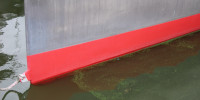
How Often Should You Antifoul a Boat?

3 Ways to Convert Your Winches to Self-Tailing
Our Store and Warehouse will be operating on adjusted hours due to the inclement weather. | Shipping will be delayed due to scheduling changes from our shipping partners. We apologize for any inconvenience this may cause. Thank you.
Our Store and Warehouse will be closed for the holiday starting on Wednesday, November 27 through Friday, November 29, 2024. | We will be open and shipping orders on Monday, November 25, 2024 & Tuesday, November 26, 2024. We will resume normal business hours on Monday, December 2, 2024. Thank you.
Online Outboards Blog
Welcome to OnlineOutboards.com!
Shopping Cart
Continue Shopping

Up to $275 off Tohatsu outboards. Click here to view huge in-stock Tohatsu inventory selection.
Sailboat Outboards

Suzuki 2.5 HP DF2.5S5

Suzuki 2.5 HP DF2.5L5
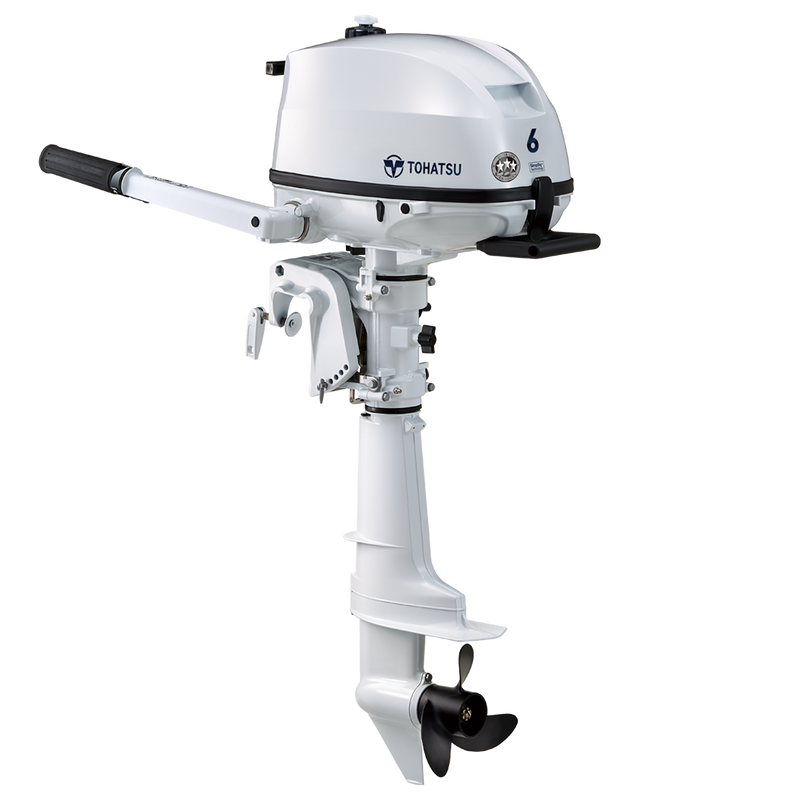
2024 Tohatsu 6 HP MFS6DWDS
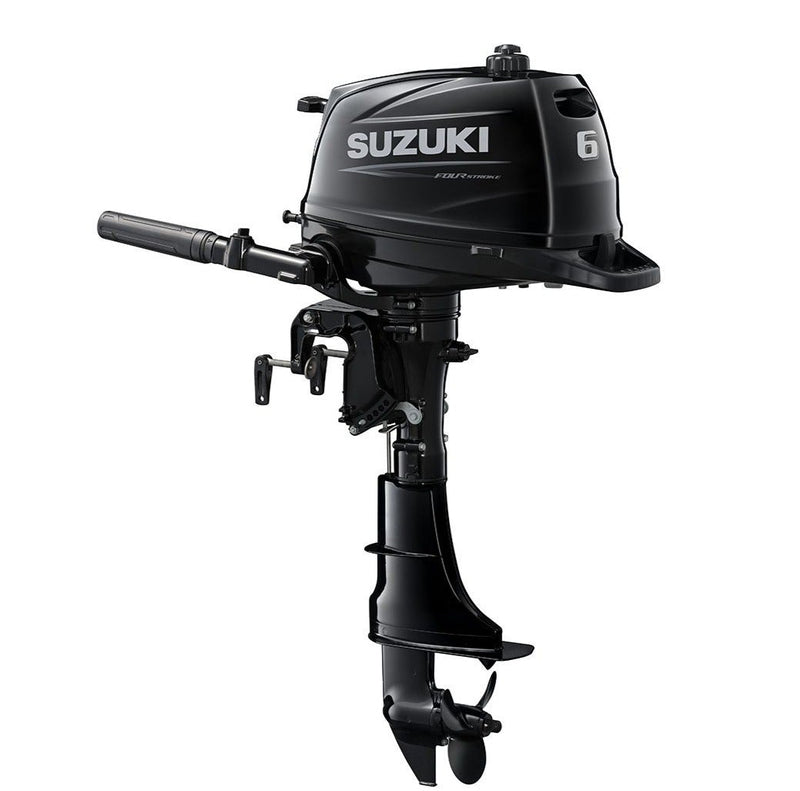
Suzuki 6 HP DF6AS5
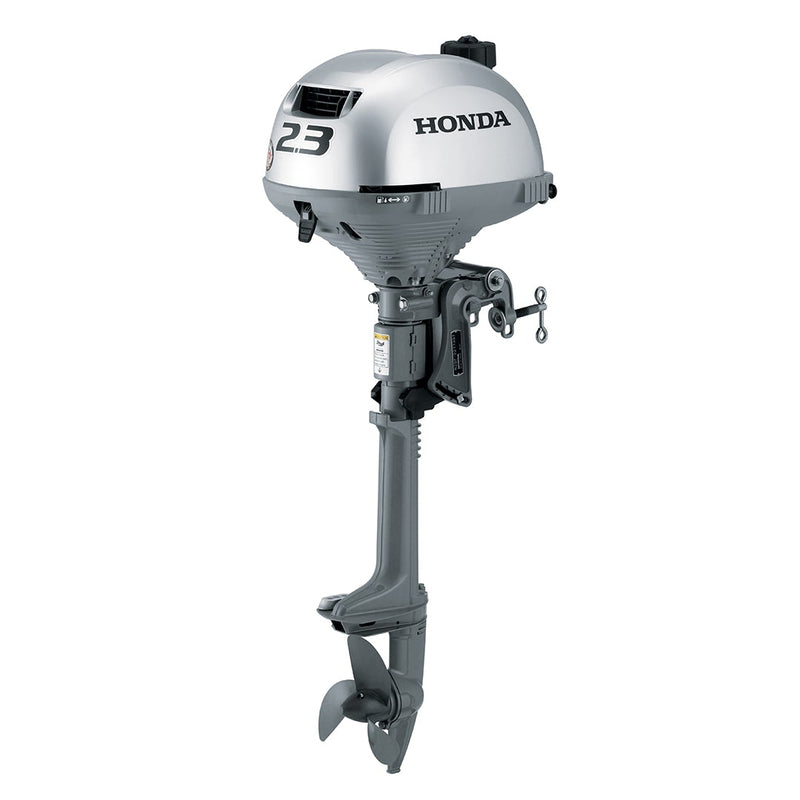
2025 HONDA 2.3 HP BF2.3DHSCH

2025 Tohatsu 6 HP MFS6DWDSPROUL SAIL PRO
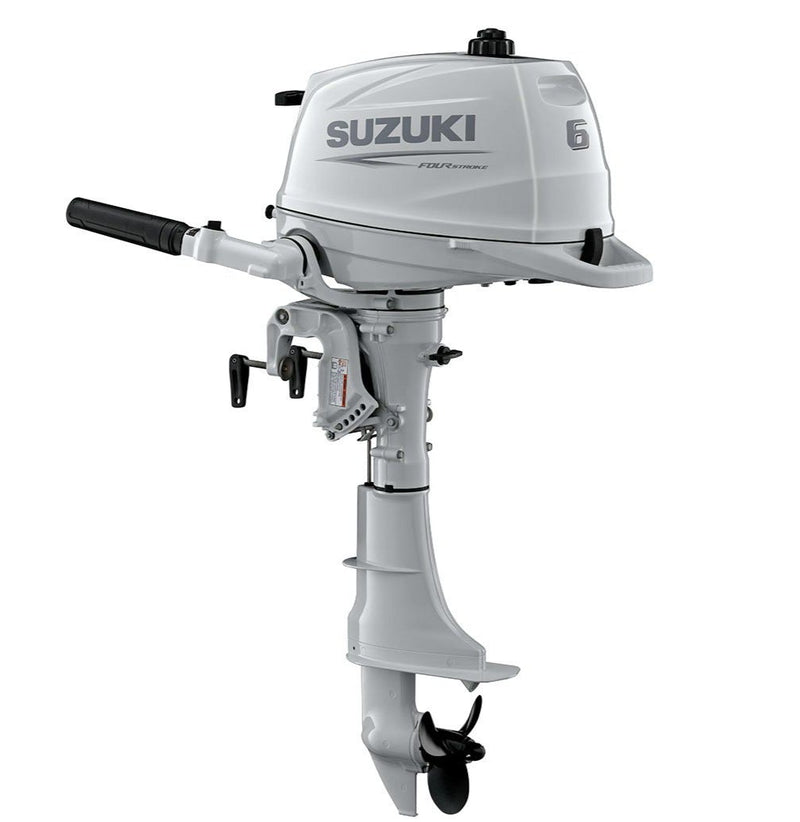
Suzuki 6 HP DF6ASW5
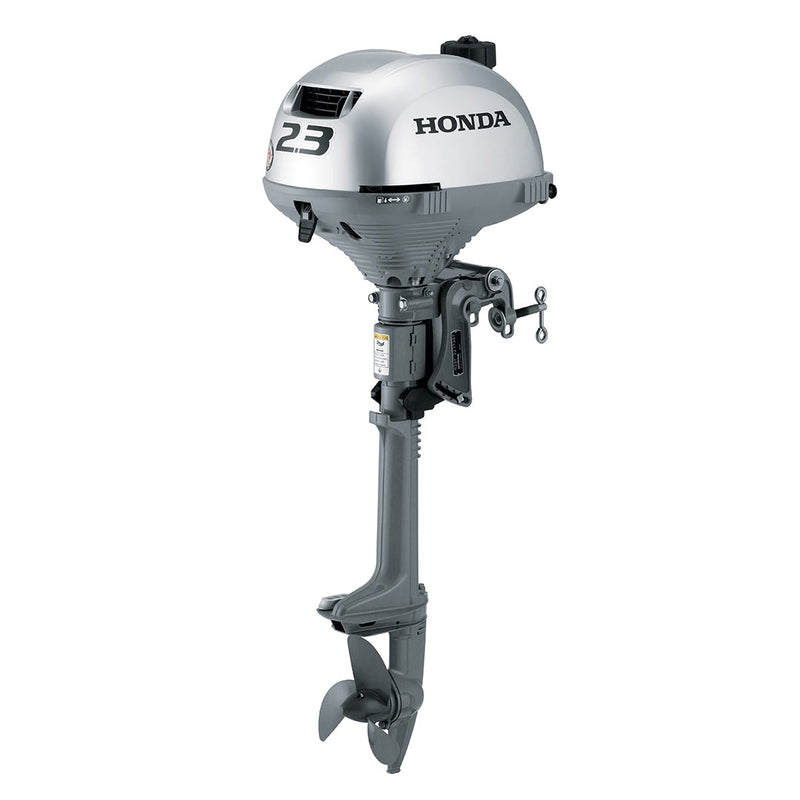
2025 HONDA 2.3 HP BF2.3DHLCH
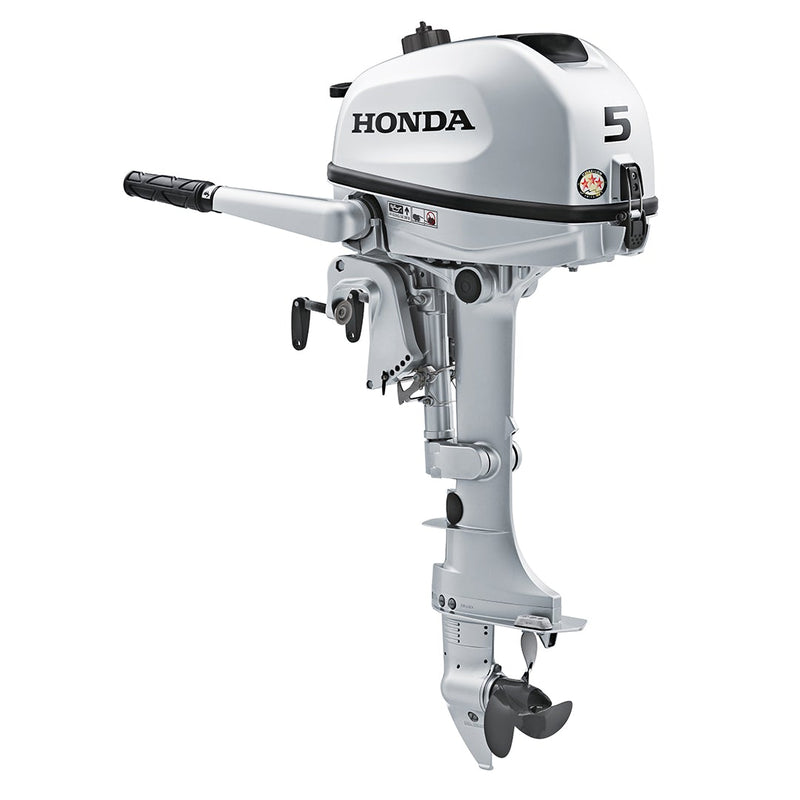
2025 HONDA 5 HP BF5DHSHNA
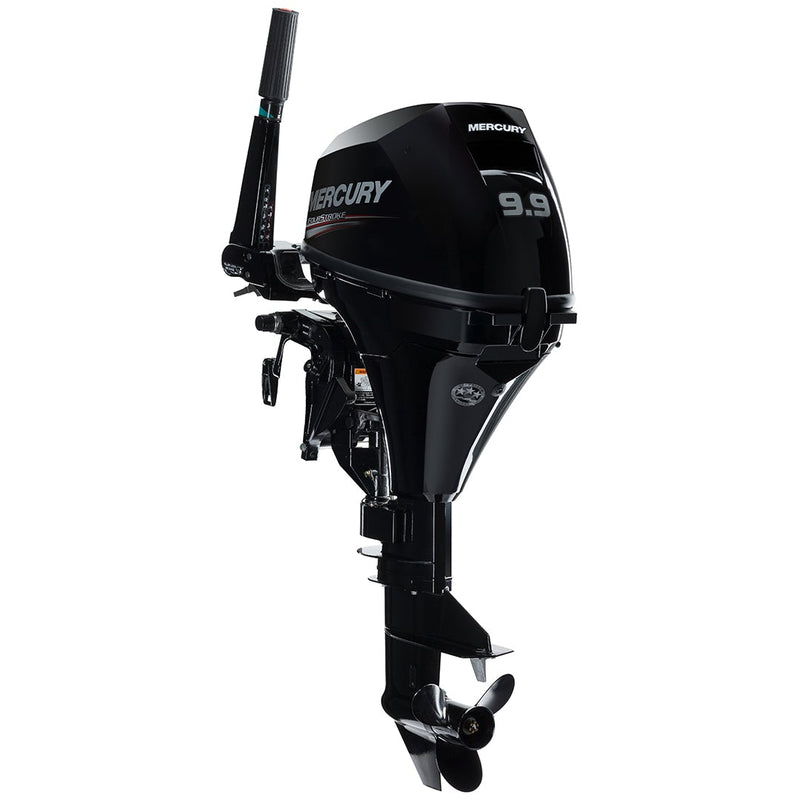

2025 Mercury 9.9 HP 9.9MH EFI
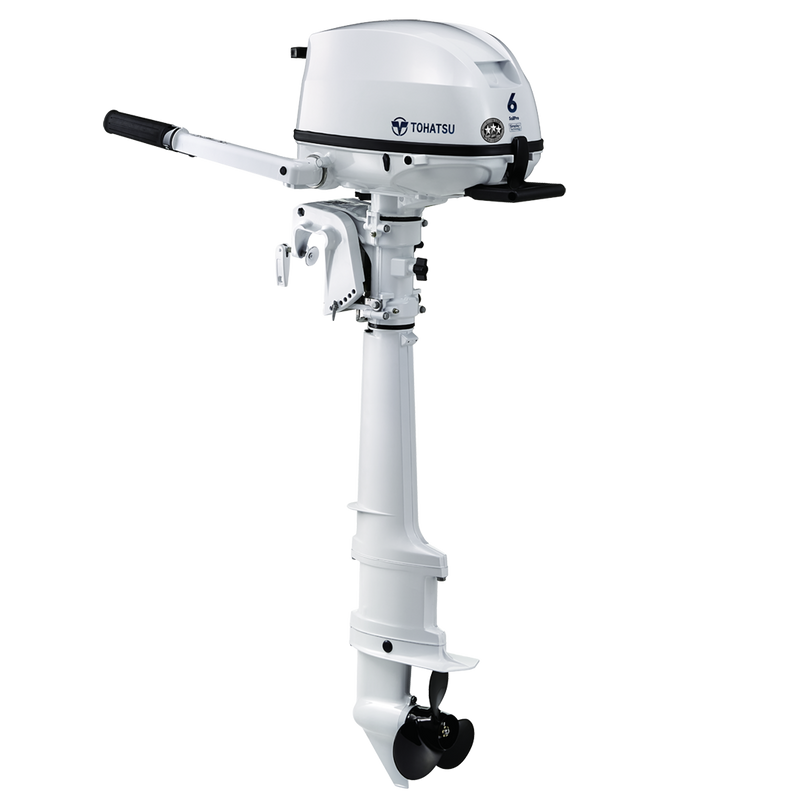
2025 Tohatsu 6 HP MFS6DWDSPROL SAIL PRO
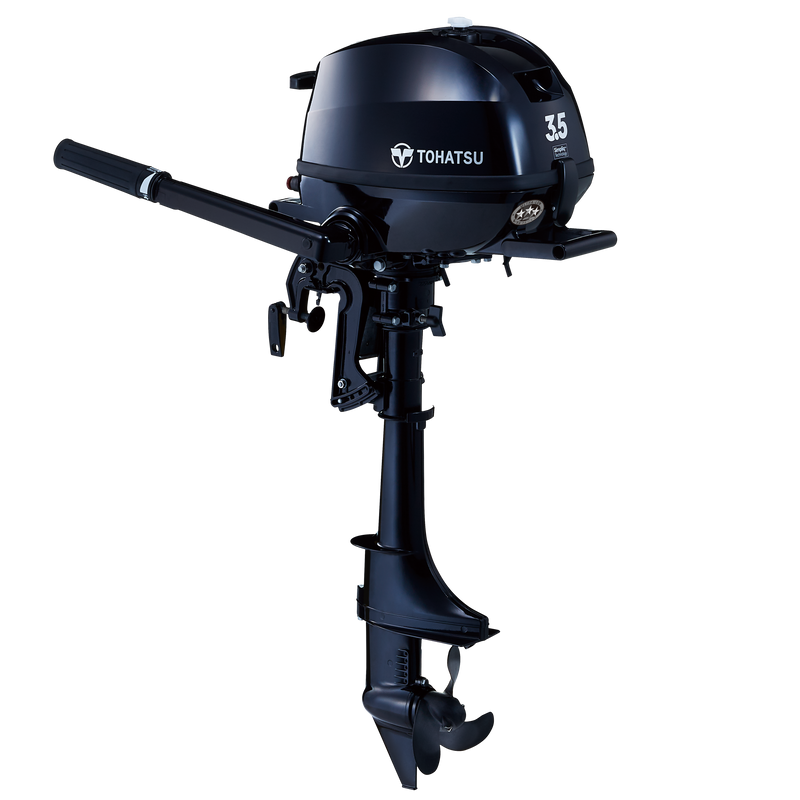
2024 Tohatsu 3.5 HP MFS3.5CS
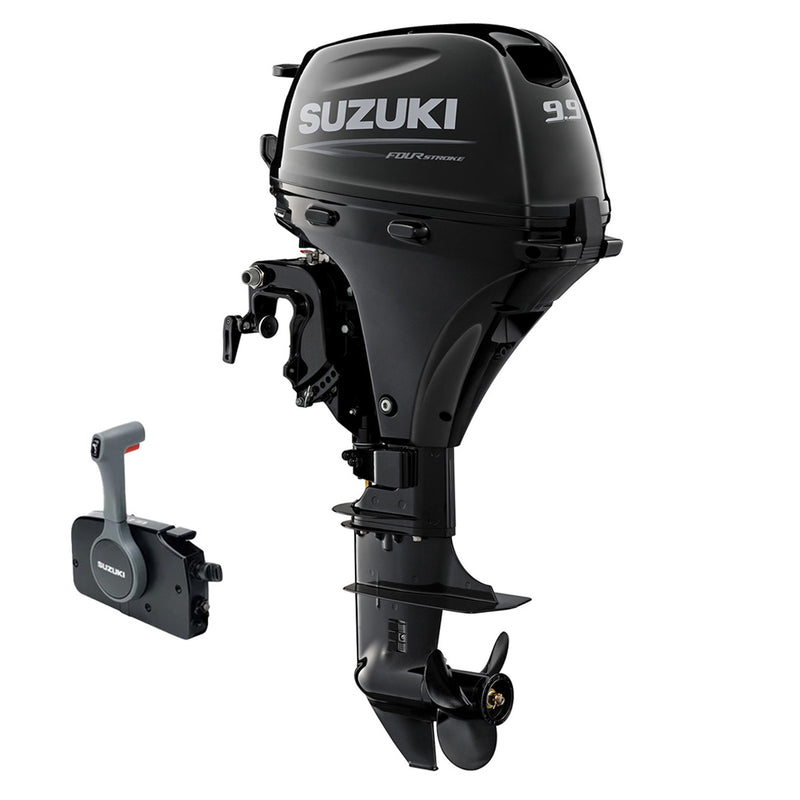
Suzuki 9.9 HP DF9.9BTL5
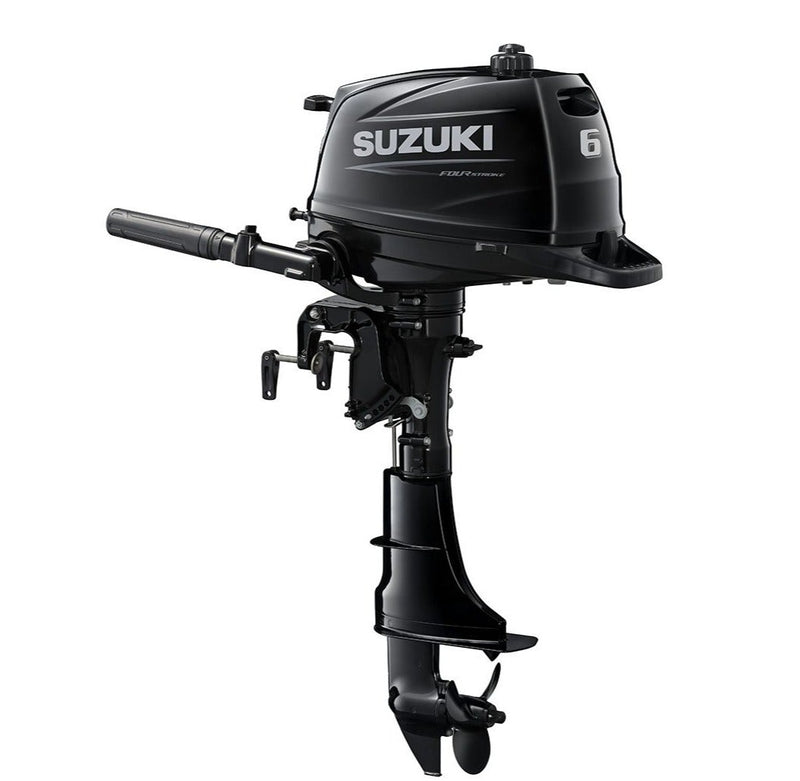
Suzuki 6 HP DF6AL5
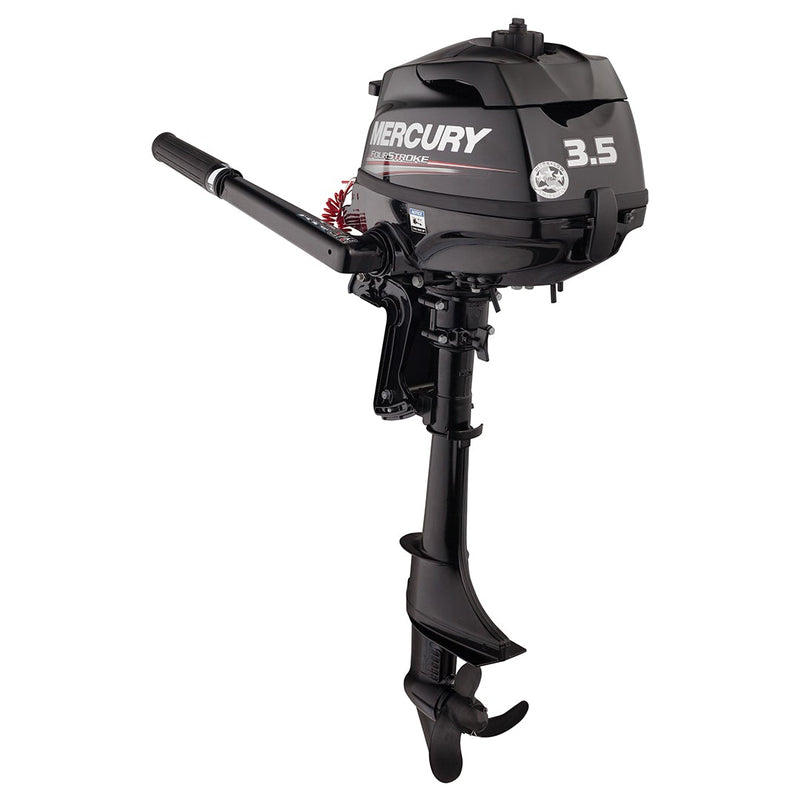
2025 Mercury 3.5 HP 3.5MH
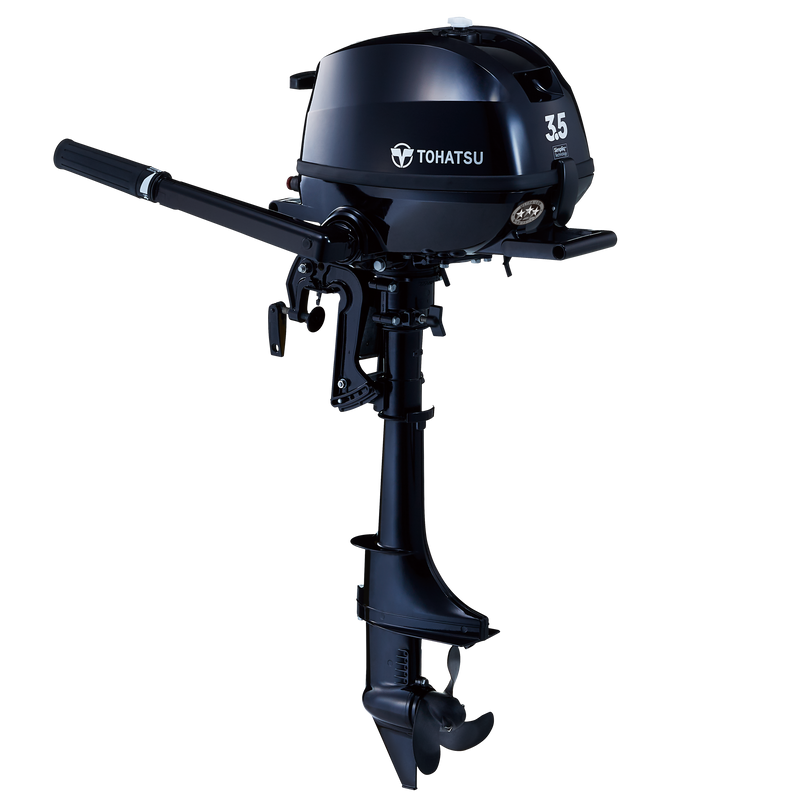
2025 Tohatsu 3.5 HP MFS3.5CL
Filter products, availability.
- In-Stock Only
Manufacturer
- $ 500 - $999
- $1000 - $1499
- $1500 - $1999
- $2000 - $2499
- $2500 - $2999
- $3000 - $3499
Shaft Length
- 15" (Short)
- 25" (Extra Long)
Trim and Tilt
Fuel delivery, cylinder(s), accessory type.
- Service Manual
Choosing a lightweight, 10 hp or under outboard motor is a dependable choice for your sailboat. First, consider the weight of your sailboat when choosing the amount of power that you’ll need. Next, decide between a two or four-stroke outboard engine motor. We offer four-stroke configuration in low horsepower options from the world’s top brands. These outboards are quiet, fuel-efficient and omit low emissions for a clean boating experience.
Purchase your new sailboat outboard from OnlineOutboards.com, an authorized dealer of the world’s top four-stroke outboard motor brands.
Quick Links
Support & help.
- Products FAQ
- Takacat Catamaran FAQ
- Privacy Policy
- Terms and Conditions
- Licensed Outboard Dealer
- Affirm - By Now, Pay Later
Our Companies
- Cumberland Watersports
- Suzuki Outboard Team
- Honda Outboard Motors
- Mercury Outboard Motors
- Suzuki Outboard Motors
- Tohatsu Outboard Motors
Sign Up For Deals

- AROUND THE SAILING WORLD
- BOAT OF THE YEAR
- Email Newsletters
- America’s Cup
- St. Petersburg
- Caribbean Championship
- Boating Safety
- Ultimate Boating Giveaway

Lightweight and Small Outboard Motors for Sailboats
- By Ed Sherman
- Updated: April 22, 2019
When you’re facing strong winds and you need to get somewhere fast, it’s time to break out a small outboard such as an aluminum genny. A dependable outboard that has enough horsepower to get you to the racecourse and back, yet is light enough not to be a drag on your race results, is invaluable. Most racing sailors don’t need as much horsepower as they might think.
An eight-horsepower outboard, for example, will push a 30-foot, 6,000-pound boat along at 6.5 knots. Anything bigger will weigh more than 90 pounds and isn’t suitable for lifting on and off the stern. Here’s our roundup of some of the best outboard motors for sailboats, and some help in deciphering what’s right for your boat.
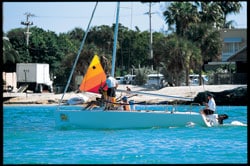
We focus our attention on engines available under nine different brand names. Two of the best-known names, Johnson and Evinrude, have dropped out of the small-engine end of the market as part of parent company Bombardier Corporation’s restructuring of these two companies. Currently they’re advertising the availability of six- and eight-horsepower four-stroke models in 2003. Another dropout in the mini-engine market is Suzuki. Their smallest two-stroke is a five-horsepower unit and in the four-stroke configuration, a 9.9 horsepower. Brand and corporate shuffling aside, of particular interest is whether the companies that are building nine horsepower- and-below engines have incorporated four-stroke technology into the lower horsepower range, since it’s now beginning to dominate the mid-sized and larger outboard engine market. The answer to that is yes, to a point.
Two or Four Stroke Outboards for Sailboats
Outboards are either two or four-stroke engines, and the four-strokes have definitely gained favor in recent years for several reasons: they’re quiet, they use much less fuel, and they run more cleanly. Since no oil is mixed with the fuel, the classic two-cycle smokescreen isn’t a factor. In a four-stroke, the piston reciprocates inside the cylinder four times for each power stroke (that is, each time fuel combusts). Rather than opening ports cut into the sides of the cylinder, intake and exhaust valves controlled by a camshaft allow a fuel/air mix to enter the combustion chamber with the suction created by the piston as it moves inward in its cylinder. Exhaust gases are forced out of the cylinder as the piston moves outward.
By carefully designing the camshaft, engineers minimize the amount of time that the intake and exhaust valves are both open, considerably reducing the amount of unburned fuel that exits with the exhaust stream. The end result? Fewer emissions and greater economy.
But they do have at least one distinct disadvantage for the racing sailor, and that’s weight. For example, four-stroke engines in the five-horsepower category are about 20 percent heavier than comparable two-stroke engines of the same horsepower. The good news, however, is that only amounts to between 10 and 15 pounds, depending upon the engine. Four-stroke engines cost more, also, but the improved technology may be well worth it.
If you’re totally weight and price conscious, you’ll want a two-stroke engine. But, if you think you can lose the weight elsewhere, a clean, quiet four-stroke without the hassle of mixing fuel could be the answer. In fact, Mercury/ Mariner’s newest six-horse four-stroke engines are actually 18 pounds lighter than their older two-stroke equivalents–a testament to the benefits of improved design and technology.
Environmental regulations are pushing manufacturers towards four-strokes as well. Four-strokes meet emission control standards, and US Environmental Protection Agency regulations mandate that new outboard and personal watercraft engines reduce engine hydrocarbon emissions by 75 percent by 2006. Environmentally conscious sailors should look for either a C.A.R.B. (California Air Resources Board) “very-low” or “ultra-low” designator, or a specification indicating 2006 EPA compliance.
How Much Horsepower Do You Need?
The amount of power you’ll need depends on several key factors. The first consideration is the weight of your boat. The second is the boat’s wetted surface. Full-keel boats not only weigh more but also have more surface area to push through the water. My rule of thumb here is to start with a two-horsepower engine for small centerboard and keelboats less than 1,000 pounds, and add one horsepower for every 1,000 pounds of displacement. For more exact, albeit complex formulae, I suggest The Propeller Handbook by Dave Gerr (McGraw-Hill 2001).
Compare your boat’s dimensions against what existing classes have found to work; for example, a Melges 24 at 1,650 pounds is typically rigged with a three-horsepower short-shaft engine, while a J/80 at 2,900 pounds can still squeak by with a long-shaft, three-horsepower engine. A 1,790 pound J/22, on the other hand, typically uses a four-horsepower long-shaft engine. On the larger end of boats using outboards, you’ll find the outboard version of the J/29, at 6,000 pounds, requires a 7.5-horsepower long-shaft engine.
If you are intending to do some cruising, or even long deliveries to regattas, an option that’s available on some engines is a high-thrust propeller. On larger boats, this option can save weight over a bigger engine and really make a difference when trying to punch through a strong tide or headwind. High-thrust props cost more and are less fuel efficient–but they can save weight and give you more power.
Once you’ve determined how big an engine you’ll need, the next step is to begin comparing features in the given horsepower range you’ve selected. There are nine manufacturers included in our roundup, but some of their brands are identical products with different labeling. In the smaller sizes, the Mercury and Mariner brands are identical. As for the Nissan and Tohatsu engines, Tohatsu builds them all. Yamaha, Suzuki, and Honda all offer competitive products as well, but they’re all independent brands.
What to Look For in Lightweight Outboard Motors
In the small engine sizes, specific features to look for can be reduced to several key items. For some, having an integral fuel tank will be important. The smallest engines have integral tanks that hold only a quart or two of fuel–good enough for an hour or two of operation. No manufacturer lists fuel consumption because the size boat the engine is pushing and the wind and wave conditions vary widely. Compare the size of the tanks, and whether you can attach a remote tank for longer trips. The extra weight and space of a separate fuel tank will be a burden on smaller ultra-light boats.
The availability of long- and short-shaft versions in the horsepower size you need is also important. Honda for example offers 20 and 25-inch transom height (long or short shaft) right down to their smallest BF2 (two-horsepower) model. Mercury and Mariner only offer a 15-inch short-shaft version on their 3.3- and 2.5-horsepower engines. Shaft length is measured from the top of the bracket to the tip of the shaft–make sure your shaft is long enough to position the propeller and cooling water intake deep enough below the waterline to avoid cavitation when the boat pitches through waves.
Other specifications that are worth comparing are whether the engine is equipped with a simple forward and neutral gearshift or if the unit has a full functioning forward-neutral-reverse gear unit. If you’re going to be doing long deliveries to regattas, or in the larger sizes for a racer/cruiser configuration, consider whether or not a charging system is part of the engine package, and if so, it’s output. Will it be adequate to keep your battery recharged and power things like a tiller pilot and running lights? Also, on the larger engines check to see if electric starting is available, or offered as a standard feature. Having it can be the difference between pain and pleasure.
If you are racing in a strict one-design group, check any class rules that apply to outboard engines. Issues related to brackets, storage of the engine and/or alternative weight might be issues, so be sure to check with your class before making any final decision.
Ed Sherman is the author of Outboard Engines, Maintenance, Troubleshooting and Repair, International Marine/McGraw Hill and a contributing editor to Sailing World.
- More: Accessories , clothing , Sailing Gear
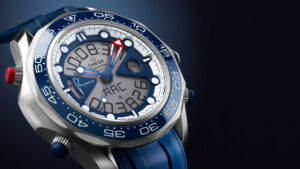
Time For A Piece of America’s Cup Barcelona
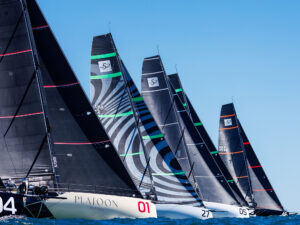
Sailmaking’s Big Three Now One
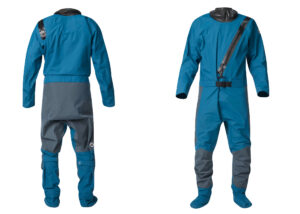
Mustang Quadra DrySuit Does More With Less
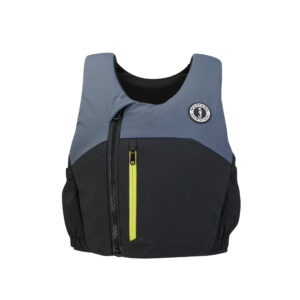
Comfort Rules with Mustang’s Minimalist Buoyancy Aid
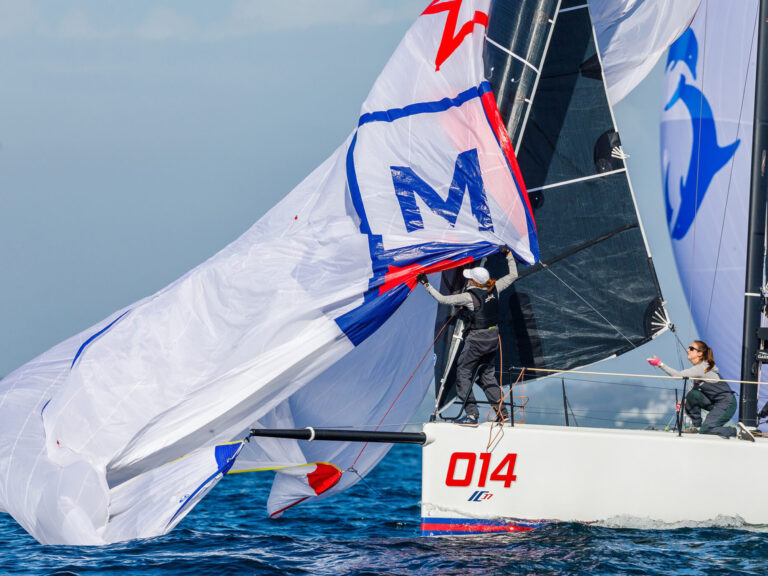
New York YC Launches International Women’s Championship
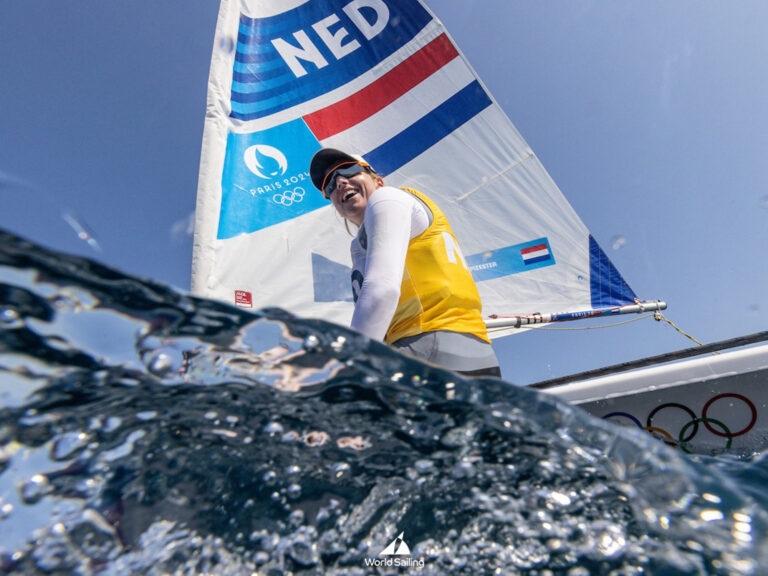
Bouwmeester, Botin and Trittel Selected Sailors of the Year

America’s Cup 1983: Wrong Horse For the Course
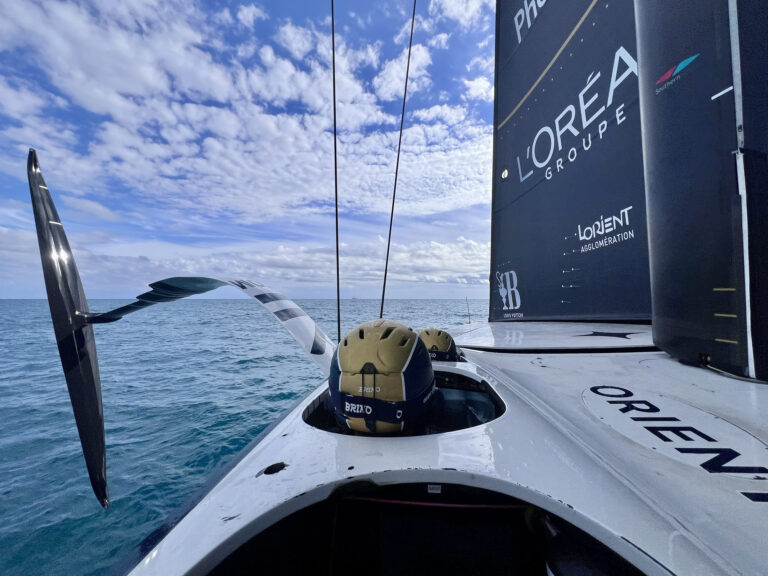
Taken For a Ride on The AC75

- Digital Edition
- Customer Service
- Privacy Policy
- Terms of Use
- Cruising World
- Sailing World
- Salt Water Sportsman
- Sport Fishing
- Wakeboarding
- Spirit 1.0 Plus
- Spirit 1.0 Evo
- Pod Drive Evo
- Pod Drive eSSA
- E-Series Battery
- G-Series Battery
- 48V Energy Storage System
- PowerCruise Essential
- Find a Dealer
- Have a Dealer Contact Me
- Product Registration
- Support Center: FAQ & Guide
- Video Tutorial
- Download Center
- Performance Bulletins
Long Shaft Outboard Motor: A Comprehensive Buying Guide
Long shaft outboard motors are ideal for sailboats that tend to have high transoms.
It’s also your go-to solution if you need to venture into rough open water where swamping is a distinct possibility and want a higher level of safety and efficiency at the same time.
However, how long is a long shaft outboard engine? How high should a transom be for a long shaft motor?
In this post, I will explain everything you need to know about long shaft outboard motors in detail.
Still indecisive about whether to go with a long shaft outboard motor or short shaft?
You’ve got to the right place. You will also find tips to help you make the decision easier.
Some of you might have already got a long shaft outboard motor and found it too long.
No worries. You can still make it right with some smart tools and accessories.
Table of content:
- Long Shaft Outboard Motor vs Short Shaft
Best Long Shaft Outboard Motors
- Using Long Shaft Outboard Motor on Shorter Transom

Short Shaft vs. Long Shaft Outboard Motor
Before confirming your order or purchase, you will be asked whether you want a short or long shaft.
So what’s the difference between short and long shaft outboard motors?
Apparently, shaft length is the major difference between short and long shaft outboard motors, and it’s measured from the top of the clamp bracket to the bottom of the cavitation plate (for combustion outboards) or central of the propeller (for electric outboards), as the figure shows below.

This leads us to some further questions: How long is a short/long shaft outboard motor?
Generally speaking, 15” is a short shaft and 20” is a long shaft for combustion outboards. The measurement is a bit different for electric outboards with 25” being a short shaft and 30” being a long shaft.
Some manufacturers also offer extra short shafts (such as the 20” extra short shaft from ePropulsion Spirit 1.0 Plus ) and extra/ultra-long shaft options for some special models to fit your various boating applications.
The table below gives you a quick reference on how many inches a long shaft outboard motor is for electric and combustion outboards, taking ePropulsion and Yamaha as examples.
| Comparison | Electric Outboards | Combustion Outboards |
| Extra Short Shaft Length | 20.7” (52.5 cm) | x |
| Short Shaft Length | 24.6” (62.5 cm) | 15” (38 cm) |
| Long Shaft Length | 29.5” (75 cm) | 20” (51 cm) |
| Extra Long Shaft Length | x | 25” (64 cm) |
| Ultra Long Shaft Length | x | 30” (76 cm) |
With this knowledge, you may wonder: Do I need a short or long outboard motor? How high should a transom be for a long shaft motor?
In fact, whether to get a short or long shaft outboard motor essentially depends on the length of your transom. Having a longer or shorter shaft length than needed will both cause potential problems:
- Too long of a shaft will make it hard to navigate in shallow water, cause extra drag, and even make the bow rise that creates an upward thrust that loses efficiency;
- Too short of a shaft might get the motor out of the water, especially in choppy waters, which produces the risk of overheating problems (due to the lack of water) and losing power thru water cavitation at the prop.
Therefore, be sure to measure your outboard shaft length correctly to get the ideal outboard motor for your boat.
Further Reading : How to Find Your Shaft Length
Settled your mind on a long shaft outboard motor? Check out our top 3 long shaft outboard motor recommendations for sailboats, Jon boats, and small fishing boats to make your next trip more enjoyable and fruitful.
#1. 3 HP Spirit 1.0 Plus
This best-selling 3 HP electric outboard motor offers various shaft length options (20.7” extra short, 24.6” short, and 29.5” long shaft) to fit sailboats, dinghies, fishing boats, tenders, etc.
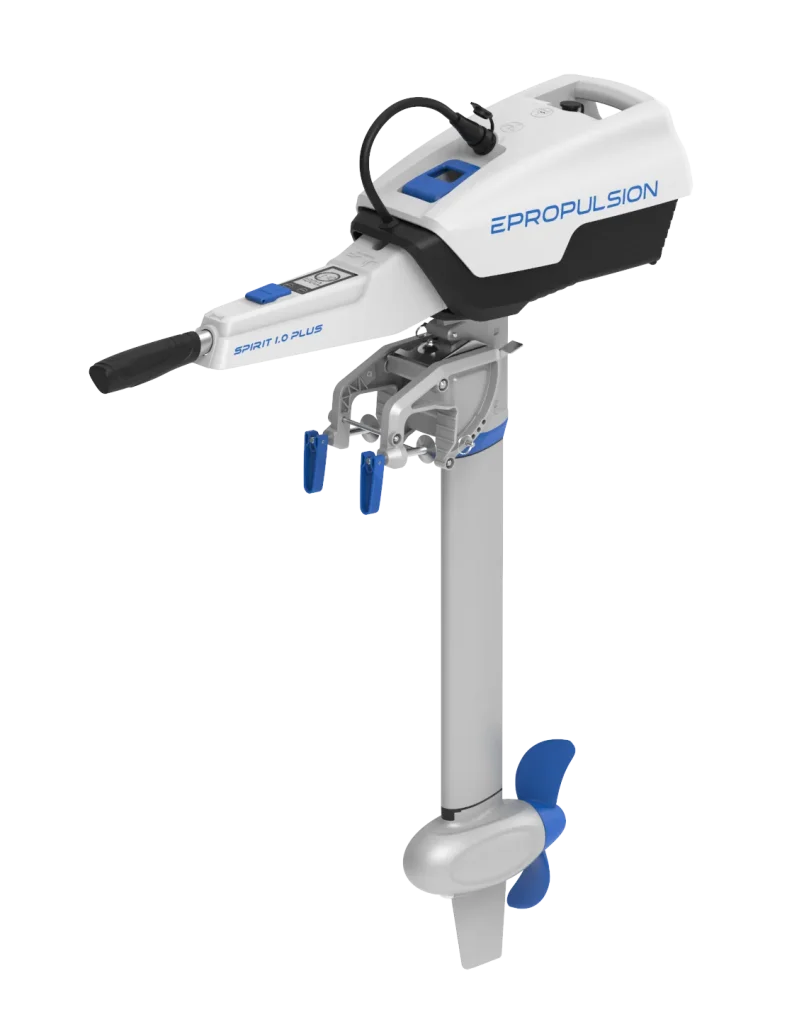
The long shaft outboard motor is portable with a 1276Wh integrated battery. It’s super easy to pack and install with no worries about heavy batteries and extra wiring or setup.
In terms of performance, you can go 22 miles at 4.5 mph or go fishing all day long at trolling speed (with one charge, tested on a 12-foot aluminum boat with one person onboard). If you slow down the speed, the range will be greatly extended and can reach 80 miles at 2.2 mph.
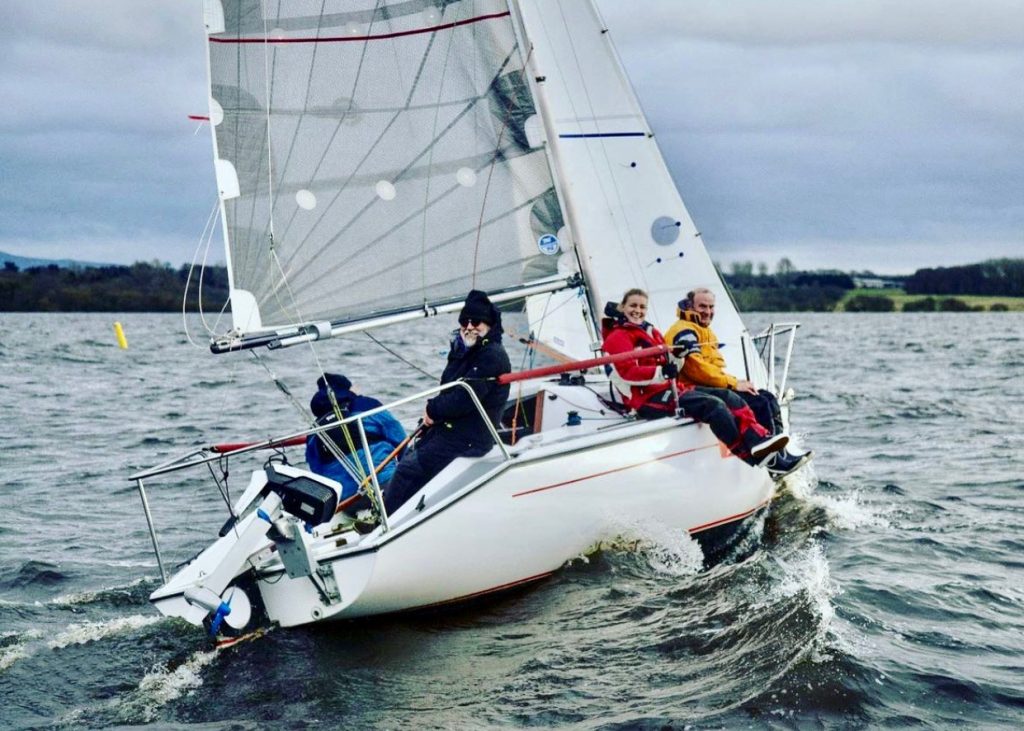
Some other intelligent features with this long shaft outboard motor include a digital display that keeps you informed of the battery level all the time, a magnetic kill switch that keeps you safe onboard, and max power output adjustment that keeps your kids safe with a smaller full-throttle power.
If you are considering buying a small long shaft outboard motor for your sailboat or Jon boat, don’t miss it out. You will be impressed by the quietness and premium experience it provides, just like thousands of existing Spirit owners worldwide.
“I bought a ePropulsion spirit as an outboard to propel our yacht on windlass days. 1000 watt charged by solar will give us about 2.5 knots of speed on windless days and a flat sea. Loving it!”
#2. Navy Series Outboard Motor
The Navy Series electric outboard motor includes the 6 HP and 9.9 HP model for your selection, both coming with a long shaft at 24.6” (62.5 cm) and a shorter shaft at 29.5” (75 cm).

The long shaft electric outboard motor provides efficient and clean power for your best experience on the boat. It’s ideal for aluminum fishing boats, dinghies, daysailers, and cruising sailboats, and can be used in both freshwater and saltwater.
Thanks to direct-drive technology, the Navy Series long shaft outboard boat motor is quiet, low maintenance, and reliable in all kinds of water conditions.
Compared with the Spirit 1.0 Plus, you can go 45 miles with Navy 6.0 Evo at the speed of 5 mph (with one charge using one ePropulsion E175 battery , tested on a 12-foot aluminum boat with one person onboard). That’s three trips from the New York Aquarium to the Statue of Liberty.
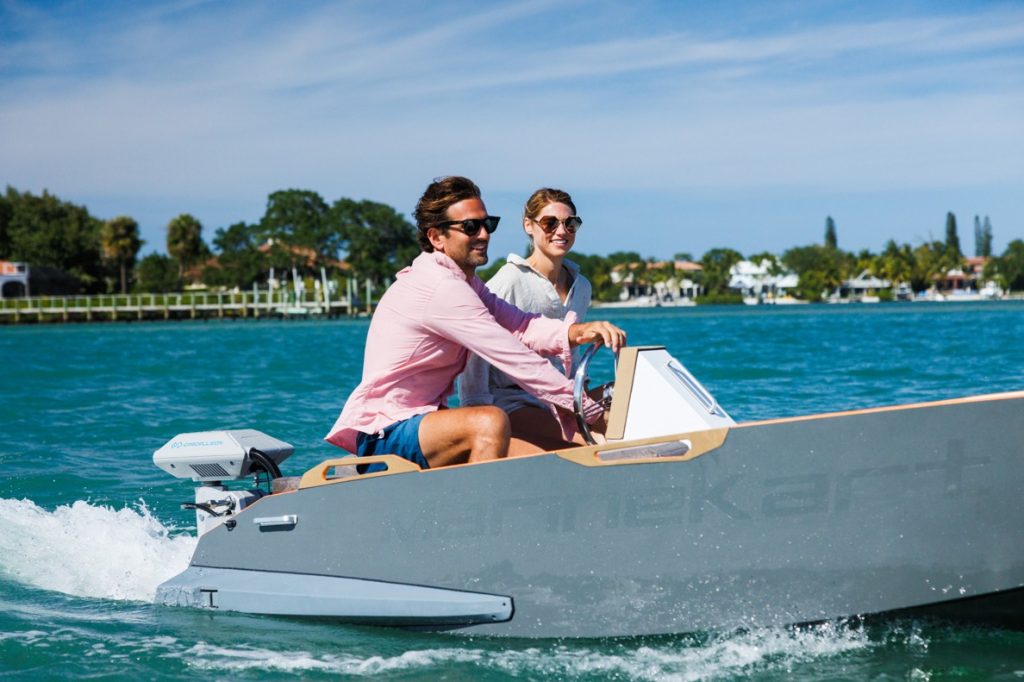
If you are looking for a long shaft outboard motor for your sailboat, you will love Navy more because it features an innovative hydrogeneration function that allows you to collect electricity from wind and water.
That way, you can have more fun on the water with less worry about the battery and runtime. See what customers say about this long shaft outboard motor and its hydrogeneration capability in real-world use:
“Just spent 3 days in my small sailboat with a new Evo onboard. It was a great trip. I didn’t count on the dynamic generation because I didn’t know how much I would get from it. There were 2 times in the trip where I noted the battery percentage going up because of the dynamic generation.”
Using Long Shaft Outboard Motor on Short Transom
Sometimes you may find a good bargain on an outboard motor that has a longer shaft than needed.
Can I use a long shaft outboard motor on a short shaft boat?
The simple answer is YES and it can be easily done with a riser – a big benefit for the long shaft outboard motor.
The riser can be self-made with some decent wood or aluminum square tubing.
There are a lot of YouTube tutorials on how to make different styles of transom elevators. Click to see how Dylan uses the long shaft outboard motor on his Jon boat with a homemade riser.
Or you can simply purchase a Jack plate to raise the transom to your desired height.
Follow this video to see how to install the Jack plate outboard riser and successfully use the long Shaft outboard motor on a short transom Jon boat.
However, can a short shaft be converted to a long shaft?
You will very possibly be out of luck with a short outboard motor on a longer transom. Even with the conversion kit available, the process is very complicated and technically demanding.
Some might choose to cut down their transom to accommodate a short shaft motor. Otherwise, you will need to trade your short shaft motor for a longer one, which can take a lot of time and effort.
It’s always easier to find a transom extender for outboards than otherwise. That’s why you will hear suggestions to always go for longer instead of shorter if you are torn between a short or long shaft outboard motor.
Editor’s Note : Although a longer shaft outboard motor can be used on a shorter transom with the Jack plate, you will experience more efficiency with a motor that matches your boat without making modifications to make one work with the other.
If you need any more help finding the right long shaft outboard motor for your boat, leave a comment below and I will reply to you asap.
Recent Posts

ePropulsion Extends 96V Product Offerings and Strengthens Recreational OEM Business

Canoe Motors Guide: Everything You Need to Know (2025 Updates)

Exploring Jon Boat Motors: A Comprehensive Guide
Join the discussion cancel reply.
Save my name, email, and website in this browser for the next time I comment.
Notify me via e-mail if anyone answers my comment.
This site uses cookies to personalize your experience and analyze site traffic. By clicking accept or continuing browsing the site, you are agreeing to our use of cookies. See our Privacy Policy here .
View the Serial Number
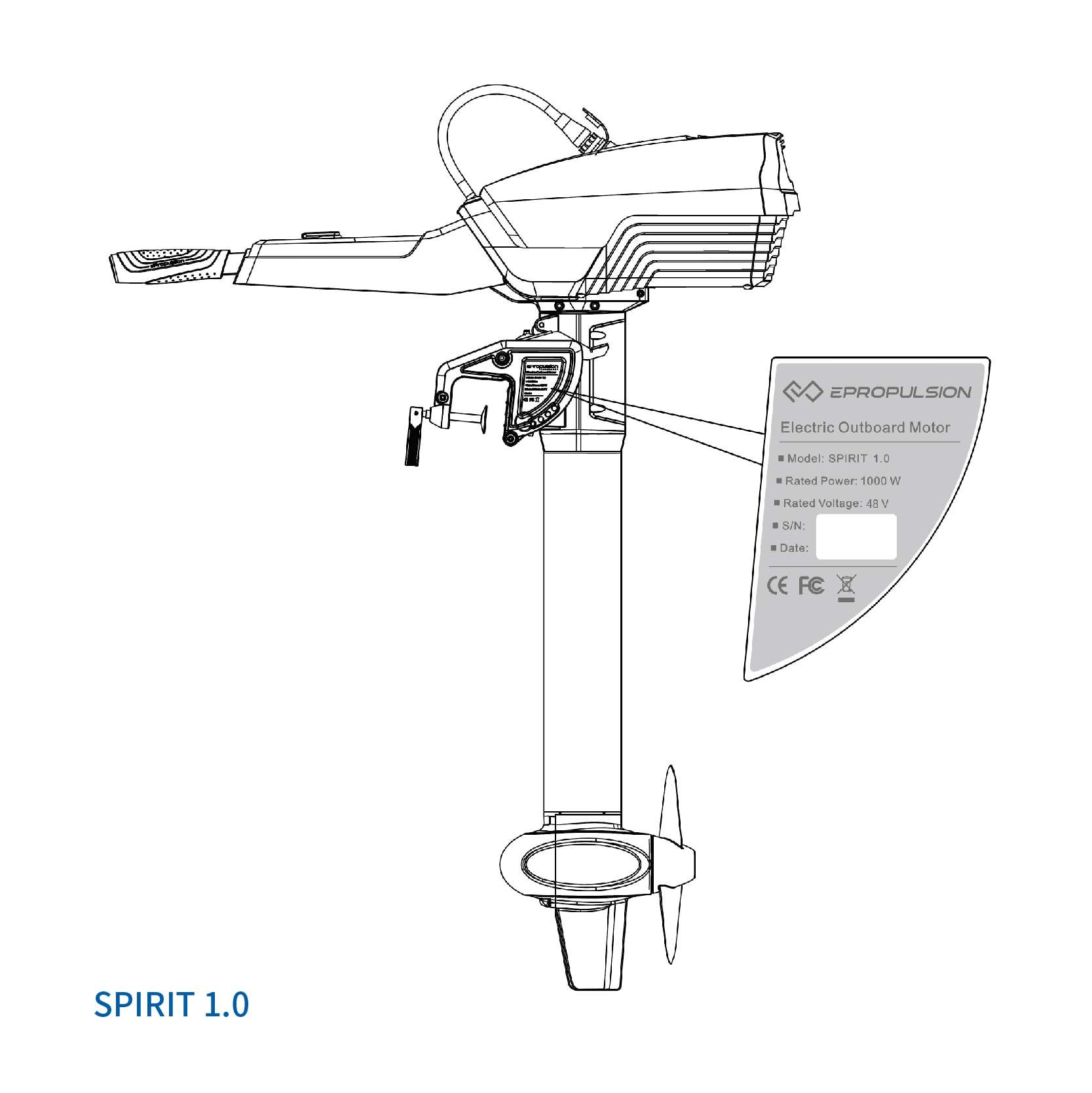

- Technical Information
- Distributors
- Terms of Use
- Privacy Policy
- International
- Discover Tohatsu
- High Power (150-250hp)
- Mid-Range (25-140hp)
- Portable (2.5-20hp)
- Dealer Locator
- Parts & Accessories
QUICK SEARCH BY SERIES
- Four Stroke
Feel the Power
Tohatsu offers the best outboard motors, including the 250 hp, 225 hp, 200 hp and 150 hp.
- View High Power Series
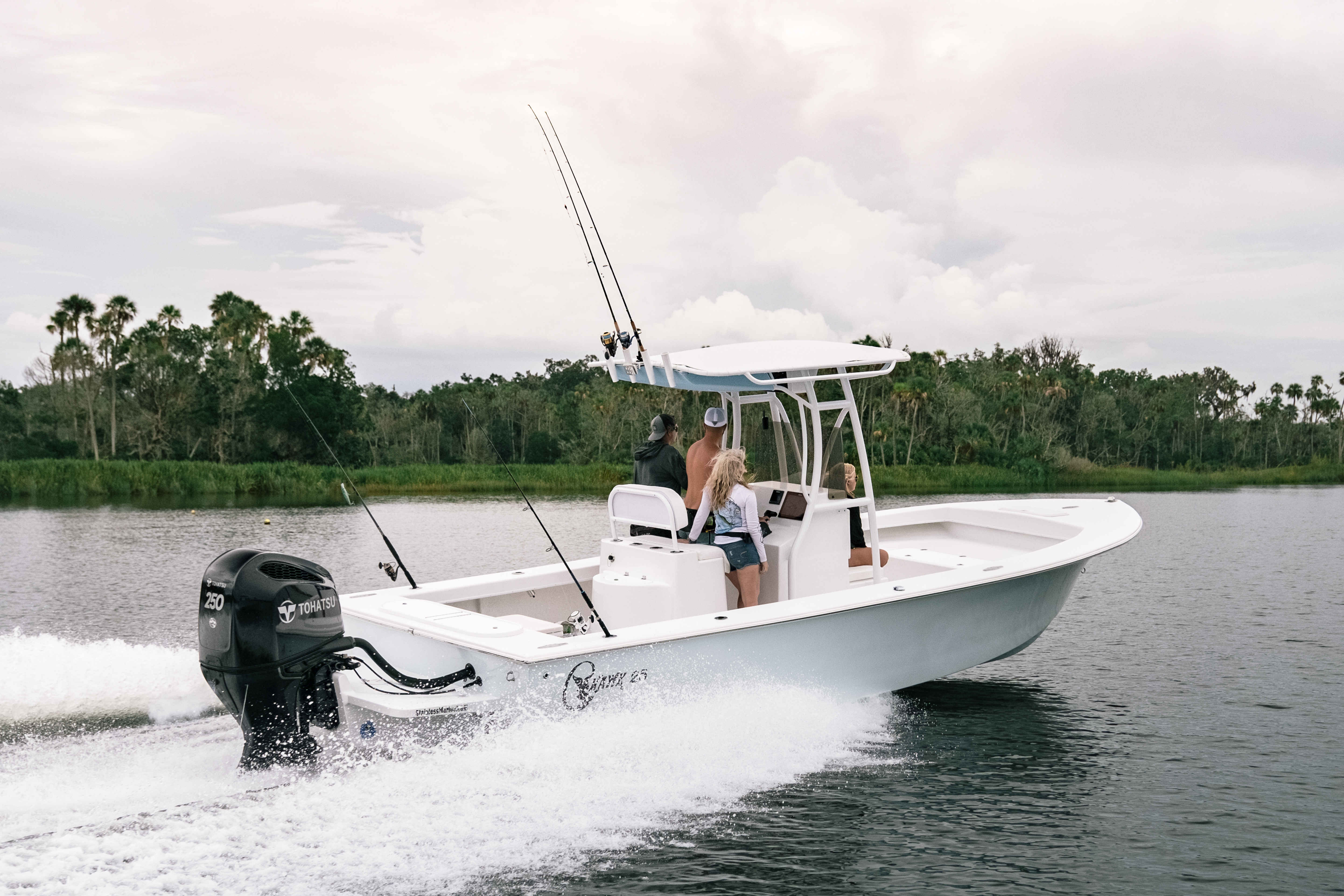
Feel the Extreme
Tohatsu offers an outstanding line up of four stroke outboard motors, including the 140 hp, 115 hp, 90 hp, 75 hp, 60 hp, 50 hp, 40 hp, 30 hp and 25 hp outboard motors.
- View Mid-Range Series
Feel the Difference
Our first priority when developing these engines was to make them lightweight and compact without compromising reliability or the quality performance associated with the Tohatsu brand name.
- View Portable Series
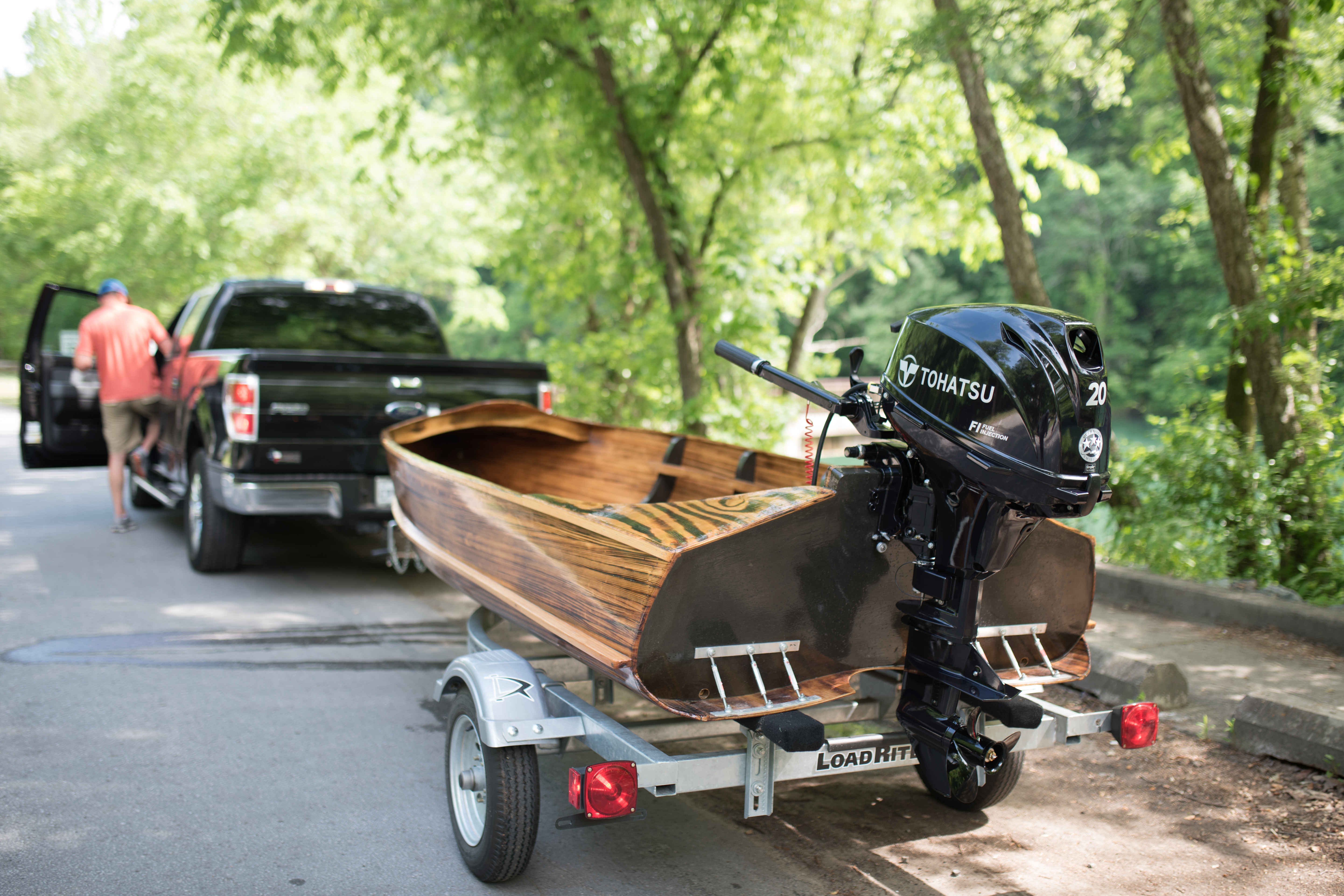
Find a Dealer
Use our handy database to locate the dealers in your area! Search by either your zip code and address to find the Authorized Dealer/Service Center nearest you.
- Show the nearest dealer

IMAGES
VIDEO
COMMENTS
From the purpose of owning the boat (blue water sailing vs. racing) to the location and impact on maintenance (cold weather vs. tropical weather), an outboard motor is just one of the many elements that will define a sailboat’s function and performance.
How to pick the right outboard motor size for your sailboat? To get the right amount of horsepower needed to efficiently propel a sailboat, divide the displacement of the boat (in lb) by 550. You need approximately 1 HP per 550 lb of displacement or 4 HP per 2200 lb.
Choosing a lightweight, 10 hp or under outboard motor is a dependable choice for your sailboat. First, consider the weight of your sailboat when choosing the amount of power that you’ll need. Next, decide between a two or four-stroke outboard engine motor.
Lightweight and Small Outboard Motors for Sailboats. When the wind doesn’t blow and you need to be at the starting line in 45 minutes, some small sailboat motors can get you there. By...
Long shaft outboard motors are ideal for sailboats that tend to have high transoms. It’s also your go-to solution if you need to venture into rough open water where swamping is a distinct possibility and want a higher level of safety and efficiency at the same time.
Feel the Extreme. MID-RANGE. 25-140HP. Tohatsu offers an outstanding line up of four stroke outboard motors, including the 140 hp, 115 hp, 90 hp, 75 hp, 60 hp, 50 hp, 40 hp, 30 hp and 25 hp outboard motors. View Mid-Range Series.